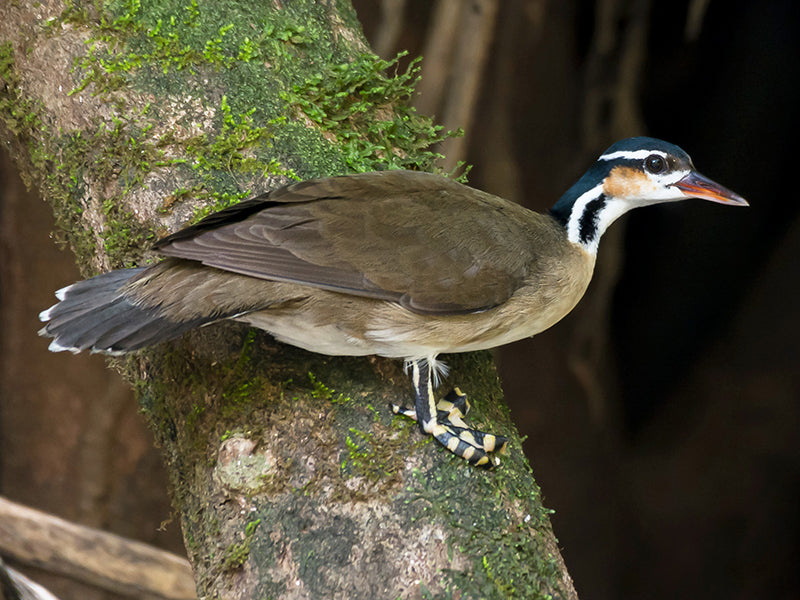Finfoots
| Order: GRUIFORMES - Family: HELIORNITHIDAE |
| 3 Species currently existing - 1 in region |
Finfoots are a group of medium-sized, aquatic birds belonging to the family Heliornithidae. They are found in tropical regions of Africa, Asia, and the Americas, where they inhabit freshwater habitats such as rivers, streams, and swamps. Here are some key points about: Read in Spanish
Physical Characteristics: Finfoots have long necks, slender bodies, and long, sharp bills adapted for catching fish, insects, and other aquatic prey. They have distinctive lobed toes with broad, flattened claws that help them swim and navigate through water vegetation.
Habitat: are typically found in densely vegetated wetlands, where they can conceal themselves among reeds, aquatic plants, and floating vegetation. They are secretive birds and often remain hidden along the water's edge, making them challenging to spot.
Behavior: are skilled swimmers and divers, using their webbed feet to propel themselves through the water in search of food. They are adept at catching fish underwater and may also feed on invertebrates, crustaceans, and plant matter found in their aquatic habitats.
Conservation: Many finfoot species are threatened by habitat loss, pollution, and disturbance from human activities. Conservation efforts focus on protecting their wetland habitats, implementing sustainable water management practices, and raising awareness about the importance of preserving these unique birds and the ecosystems they rely on.
Species Diversity: Each species has its own habitat preferences and distribution range. Finfoots are fascinating birds with specialized adaptations for an aquatic lifestyle, making them important indicators of wetland health and ecosystem quality.
Their conservation is crucial for maintaining the biodiversity and ecological balance of freshwater habitats where they reside.

Sungrebe
Heliornis fulica
Spanish Name: Colombo-selvático Americano
Size: 12 in |3 0 cm
Habitat: Areas with abundant floating vegetation, such as water lilies, water hyacinths, and other emergent plants. These structures provide cover for the birds, helping them camouflage and nest among the vegetation.
Height: <500 m
Photo: © fernando Burgalin Sequeria eBird S51113123 Macaulay Library ML 132349431

